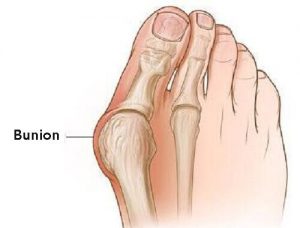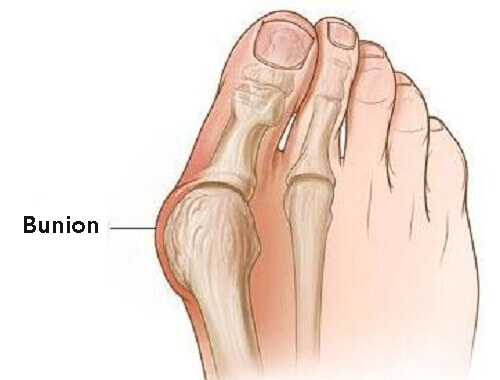 Can One Treat Bunions Without Surgery?
Can One Treat Bunions Without Surgery?
Wearing good footwear won’t cure the deformity but may ease symptoms of pain and discomfort. Ideally, get footwear advice from a person qualified to diagnose and treat foot disorders like a podiatrist (chiropodist).
Advice a doctor would give you for bunions may include:
- Wear shoes, trainers or slippers that fit well and are roomy in the front.
- Never wear high-heeled, pointed or tight shoes.
- Shoes with straps or laces are best as they can be adjusted to the width of your foot.
- Padding over the bunion may help.
- Ice packs twice a day can alleviate discomfort.
- Devices which help to straighten the toe (orthoses) may be recommended. However, there is no evidence they improve the underlying condition or stop it getting worse. They may help reduce the pain, at least for a while.
- Using painkillers like ibuprofen or paracetamol can help, but it the deformity becomes infected a course of antibiotics may be prescribed.
- Bunion products may also help. You can scroll down and click on the pictures to find out more about these.
- Try using a night splint to align the big toe while you sleep.
- Use a thin padding during the day over the area to reduce irritation.
What About Surgery?
An operation could be advised if a change of footwear does not ease symptoms. The aim of the operation is to straighten the joint as much as possible and relieve pain. It is not usually done just to improve appearance. It can be done using a local or a general anesthetic and you are usually out of the hospital on the same day.
There are many different types of operation which are used to treat bunions. These range from operations to trim parts of the joint, to a total artificial replacement of the big toe joint (similar to a knee or a hip replacement). A common surgical procedure used is called a scarf osteotomy (osteotomy means a cut in the bone). In some cases, the joint may be fused together so it no longer moves (arthrodesis). The exact operation chosen by the specialist depends on a number of factors like:
- How severe the bunion is.
- How deformed your foot is.
- If you have osteoarthritis in the joint.
- The shape of your foot.
Although some prefer to treat bunions without surgery, an operation is normally successful at easing symptoms but there are always exceptions to the rule. It is not always possible to relieve the pain completely or make the toe perfectly straight. Your specialist will be able to advise you on the pros and cons of surgery and on the success rate of the chosen operation. Complications of the operation can include:
- Continued pain.
- Infection.
- The bunion grows back.
- General risks anesthetics generate.
You may need to wear a special shoe for six weeks after the operation. Your hospital or doctor will give you specific information and advice.
What Are The Symptoms And Problems That Bunions Cause?
- Pain and difficulty walking.
- Inflammation and swelling at the base of the big toe. This can become infected.
- The forefoot may become so wide that it can be difficult to find wide enough shoes.
- You may develop arthritis in the big toe.
- The second toe can also become deformed.
- In severe cases, the big toe can push your second toe up out of place.








I was never quite sure exactly what a bunion was. I didn’t know it was an actual deformity of the big toe. My aunt had bunions and she would cover them with bandaids for cushioning and she always needed wide enough shoes. I don’t remember pain with hers, but it does seem like it would be a very painful condition. I will bookmark your article as I have clients that have bunions and will share the info. Too bad that the deformity cannot be easily fixed.
Luckily in most cases, bunions are manageable and if looked after do not cause too much discomfort.
Hi. Thanks for creating this website about bunions. I have bunions but not too bad right now, it depends on what shoes I wear but if I am wearing heals for extended periods they bother me. I never knew there was treatment you can get. I always thought you had to have surgery. Thanks for the information.
Luckily surgery is the very last option to take.
Good to know about bunions even though I have no idea what it is. But after reading this, It gives my better idea what it is and the solutions for it.
I will definitely bookmark this page for my future reference to help my own family or my friends cure their issues.
But just one thing to ask. Do bunions happen only for woman? Or man stand a chance to have it also?
Thank you
Men also get them, but women suffer the most because of their unsensible shoe sense.
I have a sister-in-law who used to be a dancer, and now two lively nieces that do ballet. This will be very useful information to them now and in the future. It’s helpful to learn the ways to combat it, no one ever wants to resort to surgery unless they absolutely have to. Thank you for sharing.
Thanks for the visit and your comment. Glad the information helped.